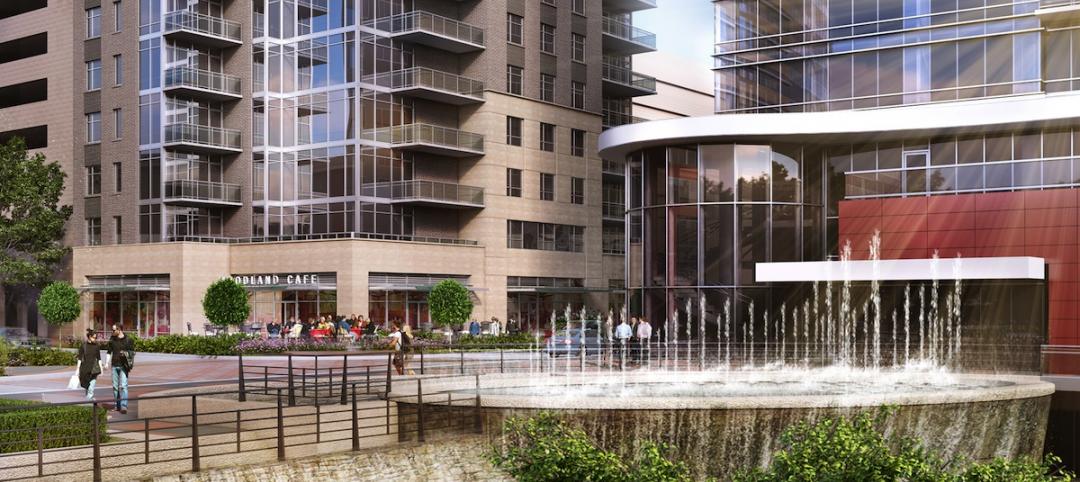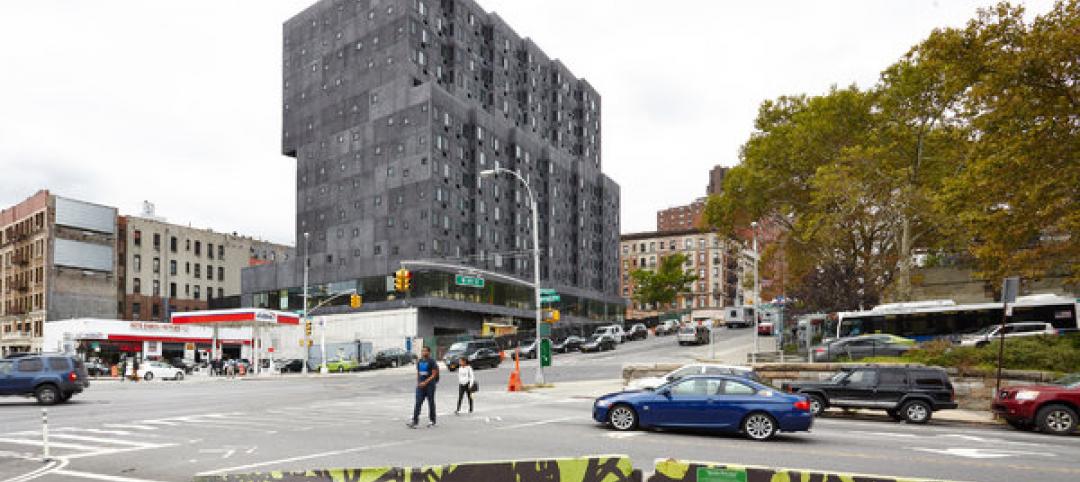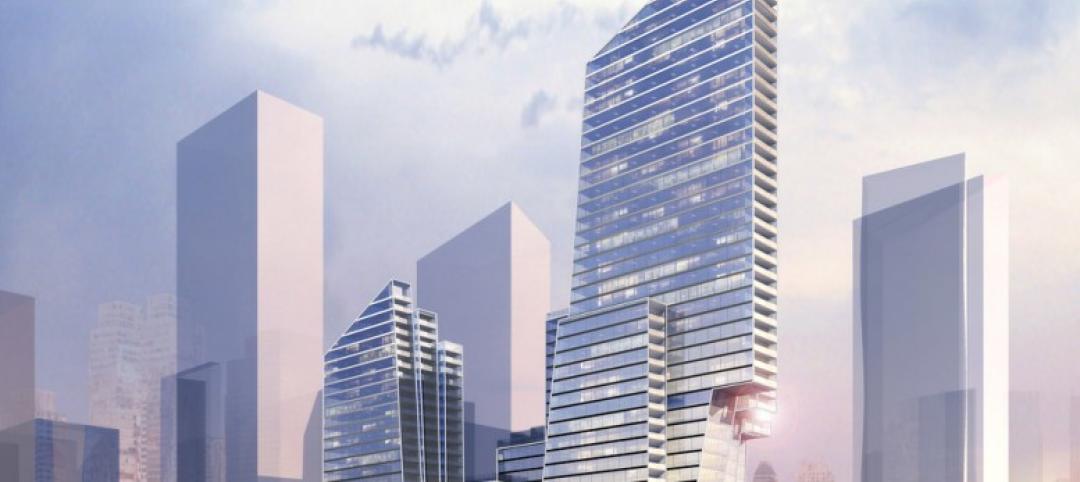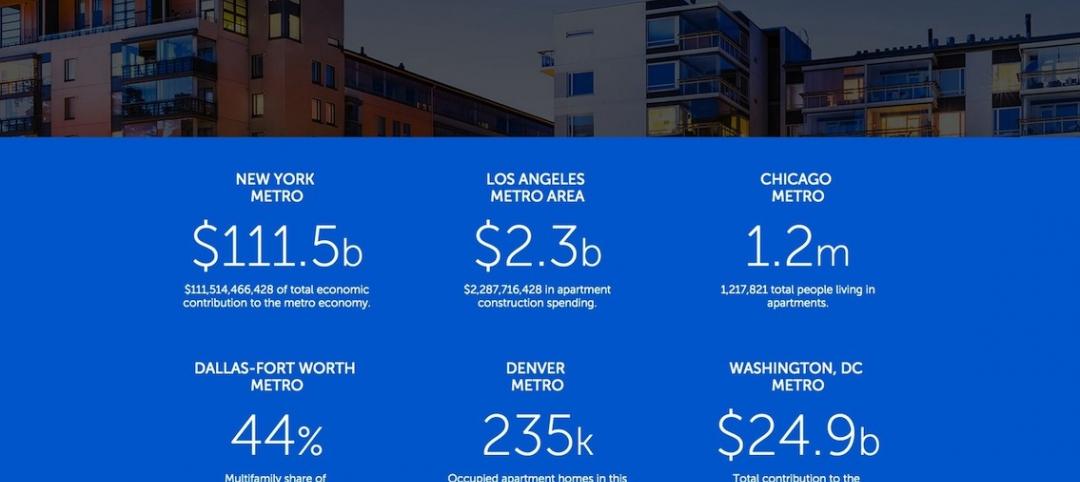Nearly 40 million Americans live in apartments. And because of the COVID-19 pandemic, developers and residents have been forced to rethink apartment living in terms of health, space, and utility.
To capture these thoughts, and to understand the future of multifamily housing, a team at Grimm + Parker Architects, which specializes in affordable and sustainable architecture projects, last summer conducted a fact-based exploration of the challenges and pressures that developers and residents experienced during the health crisis, and how those factors are likely to affect apartment design.
Other design firms have speculated on the impact COVID-19 is likely to have on apartment living, but far fewer have provided solutions as specifically as Grimm + Parker.
The following article is based on the report that came out of that firm’s exploration, titled “The New Normal and the Future of Multifamily Housing,” and created from responses of a dozen developers and 91 residents in the Washington, D.C.–Maryland–Virginia markets. This article also draws from commentary from three Grimm + Parker design architects—Zak Schooley, AIA, LEED AP BD+C, Executive Vice President; Julio Cruz, Architectural Designer; and Lauren Gilmartin, Architectural Designer—whom BD+C interviewed last December.

The vast majority of the survey’s respondents—92%—saw the social and physical implications of COVID-19 as being at least moderate, and in some cases significant. “Quarantine is difficult enough, but the added noise from other residents makes it so much more difficult. I can hear doors slamming, cabinets slamming, constant thuds from neighbors above, dogs barking. It wears on mental sanity,” said one exasperated resident whom the report quoted. Download a PDF recap of the Grimm + Parker multifamily research report, The New Normal & The Future of Multifamily Housing.
Schooley pointed out that there was a lot of concern expressed about health and safety, and the increasing density of apartment projects, which complicated social distancing and the ability of residents to “separate” rooms within apartments for different uses. And 80% of residents indicated a shift in desired residential unit types, which was a disconnect in developer thinking.
Common challenges cited by respondents included the lack of adequate space while sheltering-in-place, to live, work, and exercise. Only 11% of the resident-respondents lived in an apartment with a balcony, so quarantine made access to the outdoors problematic. Conversely, those respondents with balconies were able to adapt that space for, say, fitness or meditation.
The quarantine sometimes required residents to make purchases, like paper goods and cleaning products, in quantities that otherwise might seem extraneous. Many of the survey’s respondents had to come up with makeshift storage solutions by purchasing shelving or creating “contaminated” storage areas for wallets, keys, and bags.
SEEKING SPATIAL FLEXIBILITY IN MULTIFAMILY UNITS
In its report, Grimm + Parker suggested myriad design changes for a typical 733-sf one-bedroom apartment. “With the projected success of the work-from-home business models, residents will need their units to become more versatile and adaptable, to provide users with enhanced technology, spatial flexibility, and separation, as well as provide adequate mental relief through connection to the outdoor environment and fresh air,” the report stated.
The firm highlighted changes that included five-foot-deep balconies and French doors; larger glazing for natural light; physical areas for activities and hobbies; four-foot-deep pantry cabinets; moveable tables; and additional storage.
Schooley noted that tenants also need places where they can “isolate,” even if for a short spell.
BIGGER AMENITIES SPACES FOR APARTMENT BUILDINGS
The report touched on how COVID-19 has altered tenants’ and developers’ perceptions about an apartment building’s amenities. For example, 80% of users said it was a challenge maintaining social distancing while exiting their buildings. More than 30% cited issues with the building’s cramped laundry rooms or package collection areas. And 91% said they’d be changing the way they use amenity spaces in the future.
Two-thirds of the developers who responded to the survey indicated they would like to see amenity spaces adjusted to fit social distancing standards and improved hygiene protocols. Elevators, lobbies, laundry rooms, and grocery pick-up zones were among the most mentioned spaces.

Cruz said that Grimm + Parker looked at how residents had been coping with COVID-19 to maintain some semblance of work-life balance, another key tenant concern. With that in mind, changes to common public spaces, said the report, should incorporate more offices and designated computer lounges, flexible seating, an open lobby, a pool deck, and a small living-room space. Common areas should also have operable doors that provide flexibility to size different rooms.
The report singled out how to make fitness rooms safer by enlarging them with an open floor plan. These areas should offer hand-sanitizing stations and designated spaces for individual and group exercise that include outdoor options. Operable doors would introduce more fresh air into the indoor space and allow for flexibility to scale rooms according to usage and need.
ONLINE PURCHASES OVERWHELMED MULTIFAMILY BUILDINGS
The pandemic exposed the inability of apartment buildings to handle the sheer number of packages they were receiving as a result of their tenants’ online purchases. (Digital Commerce 360 estimates that online spending in the U.S. rose 44% to $861 billion in 2020, and accounted for 21.3% of total retail sales last year.) Gilmartin noted that most buildings’ mail rooms, pre-pandemic, weren’t large enough or equipped to handle big packages or grocery deliveries.

Grimm + Parker foresees the multifamily building of the future with electronic refrigerated storage and ample package pickup spaces. The firm also envisions mailrooms with tenant boxes that combine with rentable office and conference room space. The area, in this vision, would have multiple points of entry.
Such an environment might also benefit from individualized mechanicals and airflow zoning for each space.
Schooley says he could imagine tenants renting space just to get out of their apartments for a while to complete a project, or to give their kids cooped up in the apartment because of quarantine a temporary change of scenery.
Related Stories
Multifamily Housing | May 27, 2015
‘European’ living comes to The Woodlands with its first condo tower
Treviso at Waterway Square will offer a dynamic downtown setting with numerous live/work/play options.
Multifamily Housing | May 19, 2015
Zaha Hadid unveils 'interlocking lattice' design for luxury apartments in Monterrey, Mexico
Hadid's scheme was inspired by the Mexican tradition of interlocking lattice geometries.
Multifamily Housing | May 19, 2015
Study: Urban land use policies costs U.S. economy $1.6 trillion a year
The research contends that more affordable housing options can help cities generate significantly more income.
Multifamily Housing | May 17, 2015
New York City runs into affordable housing dilemma
New York City’s affordable housing policy has created attractive low-cost housing, but the price of success has been high.
Sponsored | Coatings | May 14, 2015
Prismatic coatings accent the new Altara Center
This multi-use campus will contain a university, sports facilities, medical center, and world-class shopping
High-rise Construction | May 6, 2015
Two new designs submitted for New York City Riverside Center
Both designs reference the cantilevers and other elements featured in architect Christian de Portzamparc’s original masterplan for the complex, which has now been scrapped.
High-rise Construction | May 6, 2015
Parks in the sky? Subterranean bike paths? Meet the livable city, designed in 3D
Today’s great cities must be resilient—and open—to many things, including the influx of humanity, writes Gensler co-CEO Andy Cohen.
Mixed-Use | May 5, 2015
Miami ‘innovation district’ will have 6.5 million sf of dense, walkable space
Designing a neighborhood from the ground-up, developers aim to create a dense, walkable district that fulfills what is lacking from Miami’s current auto-dependent layout.
Codes and Standards | May 1, 2015
Colorado House kills construction defects bill
The legislation would have made it harder for condo owners to sue builders.
Multifamily Housing | May 1, 2015
Trade groups extend campaign to promote apartment living
The groups claim that there are more than 37 million Americans—12% of the population—living in just under 20 million apartment units nationwide. Apartments and their residents contribute $1.3 trillion annually to the economy.


















